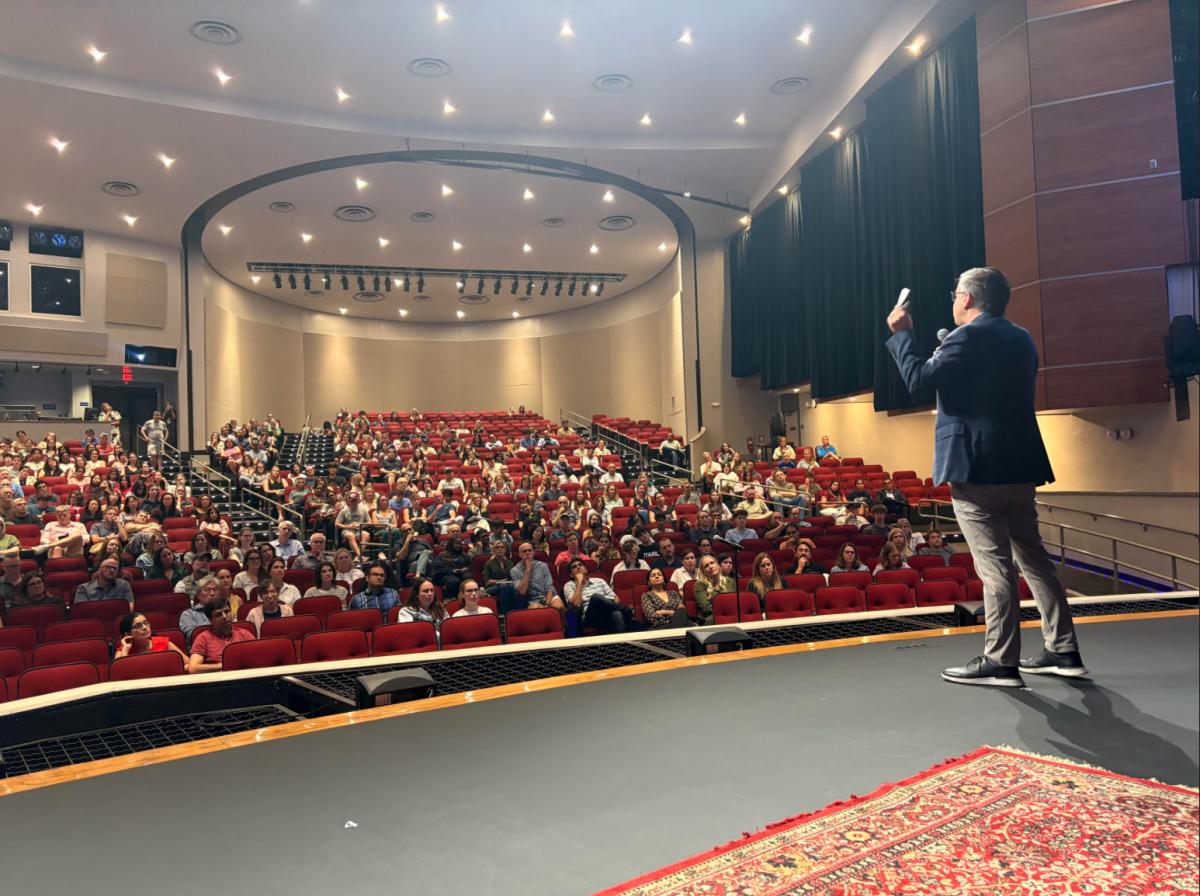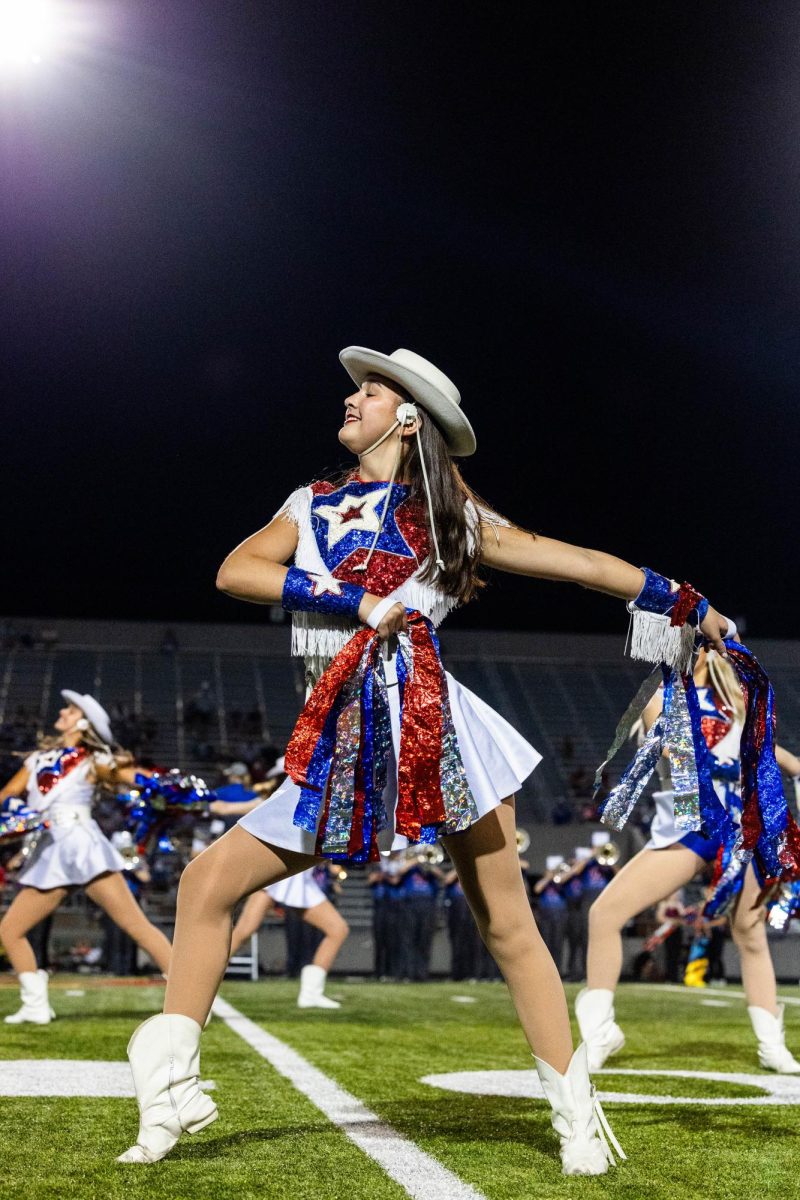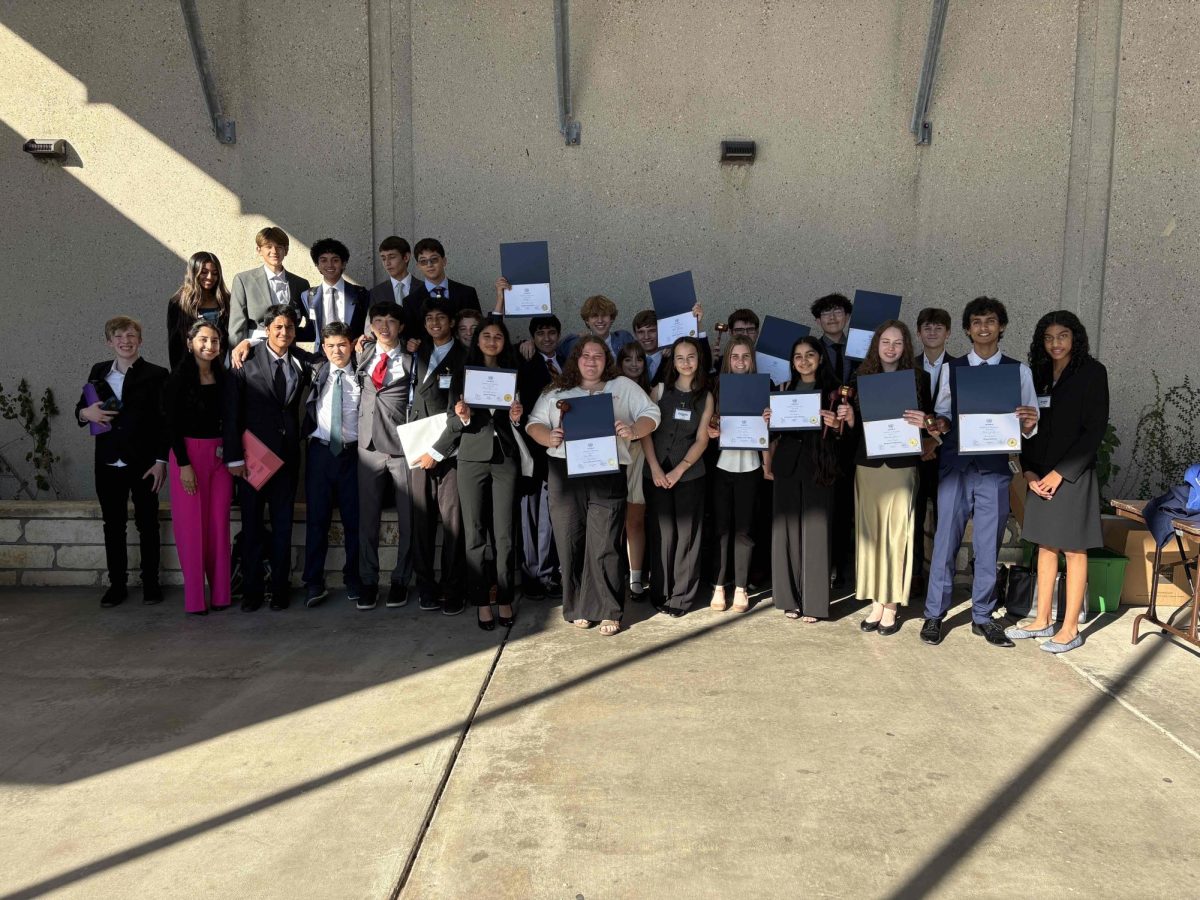As the Editor-in-Chief of our high school’s newspaper, I had the privilege of speaking with Heath Einstein, the Vice Provost for Enrollment management at Texas Christian University. He explained that the responsibilities of his role spans throughout the offices of Admission, Financial Aid, the Registrar, and Enrollment Systems and Analytics. Essentially, they are at the forefront of ensuring the university effectively identifies, admits, and supports students from their initial application through to graduation. Having previously served as the Dean of Admission, with a primary focus on recruitment, Einstein now operates with a broader, more strategic vision for the university’s overall enrollment success.
Einstein: “So my job is Vice Provost for enrollment management, which to people in high school probably means very little and frankly to people in college might not mean much more. I am responsible for the office of admission, the office of financial aid, the office of the registrar, and the office of enrollment systems and analytics. What all of that means is, I am responsible for making sure that we are recruiting, admitting, enrolling students and retaining students as well, making sure that they stay here and are able to graduate.
That would include, for example, the office of campus life, the office of housing and residence life, the office of student success [I] make sure that were not just admitting students, which is really important, but that they’re being successful once they’re here so that we retain them and graduate them because if students don’t graduate, it doesn’t really make sense for them to come here in the first place.
Prior to this role I was the dean of admission at the university where my focus was squarely on the recruitment and the admission and enrollment of all undergraduate students, domestic and international. Now that office reports to me and my job is a little more bigger picture, strategic and so fourth.”
Q. Having worked in college counseling at the high school level, how does that experience shape your understanding of the needs and perspectives of prospective students and their families?
A. “It shapes everything. When we think about messaging to students I put myself in the position of the student because I have sat with them before, sitting in a chair next to a student when they are reading the email and they’re getting really nervous because they’re not sure what the college is saying. We have language colloquially that a student would have no idea what it means and if we were not explaining ourselves in very clear terms, then that can cause anxieties to students.
I’ll give you a very simple example of how my experience shaped one policy or practice we have made.
One of the things that I observed is that when colleges would notify students of their decisions, if it occurred during the school day, it would completely wreck the school community because you have all these kids running around excited about getting in and others in tears because they didn’t get in and effectively the school couldn’t function. We made a decision that when we notify students electronically that would happen after school hours so that a student can be at home in private, or maybe they could be at a practice or something but it wasn’t completely destroying the ability for teachers to teach their course material.
It’s a simple example but that is exactly the kind of thought process I have when we are talking about messaging to students or practices that we have or decisions we make on where to recruit and everything. It is, what is the direct impact on students, on counselors, on parents. Those eight years were instrumental in shaping my thought.”
Q. Given your deep involvement in college admissions, what are some of the most significant trends/changes you are currently observing in higher education enrollment?
A. “The only examples I can think of like that is when we see legal interference. For example, a couple of years ago, the supreme court ruled on affirmative action and that was a very quick and clean change that all the universities had to change. We sort of saw the writing on the wall and we could prepare for it. The bigger trends are things that typically take shape over a longer course of time.
One example is in this period of what is dubbed as the ‘enrollment cliff’.
There is a really good reason why this happened. In 2008 and 2009, we had an economic recession. There was the housing bubble that burst, there was sort of this period of economic calamity and when that happens throughout time, when there’s less money, people tend to have less children.
So if you think about it, we have an 18 year head start on knowing who our clientele is going to be because we just look at birth rates and I know exactly how many students are going to graduate, roughly speaking. So 2008 and 2009 is this period of economic decline, fewer children being born, which means fewer high school graduates, 18 years hence. What happened after however, is different from other periods of US history.
Typically when the economy rebounds, people have more children but that didn’t happen this time. So we will go through an extended period where we have low numbers or lower numbers, relatively speaking, of highschool graduates. That significantly impacts the competition for students. You have X number of colleges and we’re all vying for Y number of students. It means it gets harder for all of us to make our enrollment goals. What you have seen as a result is bifurcation between schools that have great brand recognition, are considered to be more desirable and those that struggle to meet their enrollment goals tend to be smaller and more regional schools. Alot of those schools are either closing or merging with other colleges, so this has been a major trend that we’ve been observing now for about the last 10 years because we knew this was what was coming.
Another example of change is how we market. When I was in highschool, we would get things in the mail and everyone got the exact same piece of mail, it said the same thing. Which is great except there’s nothing personal about that experience. Overtime that has transitioned to, now with AI, we can send you a very personal digital piece because we know how much time you’re spending on our website and what pages on our website you’re going to. So I could send you an email that speaks exactly towards things that you are interested in knowing. That has been a huge change in how we market to students. To parents, this idea of a very personal marketing piece seems creepy but to students they are used to it. Think about how much time you’re spending on tiktok and instagram. Everything is created by the algorithm that knows what your preferences are and you’re satisfied with what you’re seeing. College recruitment is working in the same way.”
Q. How do you see the relationship between college admissions and student retention, and what strategies are you implementing to ensure students thrive once they enroll at TCU?
A. “There are lots of different things that we do because there are alot of different reasons students might not stay and graduate. If you look at why students choose to leave there will be a number of different reasons. Sometimes it’s finances, sometimes there is something that happened at home and they need to get back home, sometimes it’s that the student wants to study a major that their current university doesn’t offer or even students are struggling academically.
The number one reason students transfer or stop out entirely is because of a lack of connection. So the first thing we try to do is build in connection points from the very beginning.
But then we’ve got a committee on campus of folks from a number of different departments who are consistently looking at barriers of students moving forward.
We call the group P90 (Project 90) and because our goal is to have a 90% graduation rate, we used to have a goal of 85% but we surpassed that goal. Our first to second year retention rate – which is a really strong proxy for how satisfied students are with the experience – is 93%. 93% of students that start at TCU come back for the second year. The national average is way lower than that. This group will look at data in number of different ways, we’ll look at it by cohort, we may take a look at a particular group of students that isn’t fitting well and try to understand why, we’ll look at exit survey data so when students leave the university we can understand why and address those issues, we look at curricular barriers etc.
We had a committee last summer that looked strictly at barriers to student success academically for transfer students because transfer students actually make up a pretty big percentage of our population. This committee and other groups on campus are continuously looking at data from every angle to better understand, what is it that is preventing students from exceeding and how do we collaborate with folks around campus to make sure that they are able to do better.
Another example is, we have something here called the UGrade, U being unsatisfactory. A student would get a UGrade part way through the semester as an indicator to them that they’re not on track to pass the class. We had to adjust the timing that grades went out to students and communicate to faculty to help them understand the importance of getting UGrades out because there was some inconsistency in those two things. Almost 100% of faculty were not sending out UGrades, and those who were, weren’t sending them out at a steady time. It was disorganized in the way one student might get it in the fourth week of the semester and another could get it in the eighth week of the semester. By the eighth week you’re so far along it might be too late to do anything about it so we had to streamline that process.”
Q. What are some of the unique challenges and opportunities in attracting and retaining a diverse student body in the current higher education environment?
A. “The biggest challenge we face is a perception challenge. Everyone knows that TCU is a private university with a high sticker price and just by virtue of that, there are some families who won’t even consider the university without the knowledge of what our financial aid packages might be and the value we are able to provide for students.
Q. What role does financial aid play in your overall enrollment strategy, and are there any changes or enhancements you envision for TCU’s aid programs?
A. “Most students can’t afford to pay the full cost of attendance at the sticker price that colleges are charging these days. If you pay attention to the media, you know that the cost of education gets a lot of attention and, over the last 20 years, has risen pretty sharply.
Now, it actually hasn’t gone up in the way most people think. What I mean by that is if you account for inflation and the financial aid programs that are out there, the net cost hasn’t moved as much as articles would portray. But still it is really expensive, there’s no question about it. Most of the families at TCU do not pay 100% of the sticker price. Colleges will go to great lengths to support students in the form of academic scholarships and need-based financial aid.
Financial aid is administered through the financial aid office, but the sources of those funds could come from a number of different places. It could come from the federal government. It could come from the state government. Most of the funding actually comes from the institution itself. It could be from endowment money or from tuition that’s being collected by students who are paying a fuller amount. That money goes to offset the cost for other students.
We’ve actually started something recently over the last couple of years specifically geared towards our lower income Texas residents. We noticed as we dug into the data that we have a fairly high proportion of students from middle to higher income families but not as many from lower income families, so we have really invested in the lower income bracket to try and make sure we have a socioeconomically diverse campus.
Q. From your perspective, what are some of the key qualities and experiences that make a high school student a strong candidate for an academic program like TCU’s?
A. “We actually have more students that qualify to do well here then we have space for. Once we get beyond if the student is able to succeed academically then what we’re really looking for is students who can demonstrate that they will have an impact on the community. We try to assess the ways in which you’ve impacted your community during your high school years and when I say community, I mean that in a really broad way, that doesn’t necessarily mean just at your high school, it could be in your larger community.
What we don’t want to see is just a student who has a blank resume and hasn’t done anything with their time other than go to school and come home. The reason for that is that we have a high impact community. Our students are really involved and active in our community. We have a very happy university.
We’re looking for students who have experienced that level of connection in high school so that it transfers when they come to TCU.”
Q. With TCU offering a test-optional admission policy, how do you advise students to best showcase their academic abilities and potential to succeed at TCU if they choose not to submit standardized test scores?
A.
“So if your test scores enhance your academic profile within our pool of applicants, then we will look at your test scores. If they do not, then we will ignore them. That is a unique way that one college approaches it and we do that to try and take the pressure off of students in having to figure out, ‘should i send my scores or not send my scores?’.
For us we say go ahead and send it because it will never hurt you. But that’s not the case at every college. You really do need to read the fine print and talk to people at the university and look at their data. If the absence of a test score at a university would suggest that your chances of admission are lower, then you probably should be submitting your scores there. I would let the data be your guide and of course use your school counselor because they definitely know how things work.”






